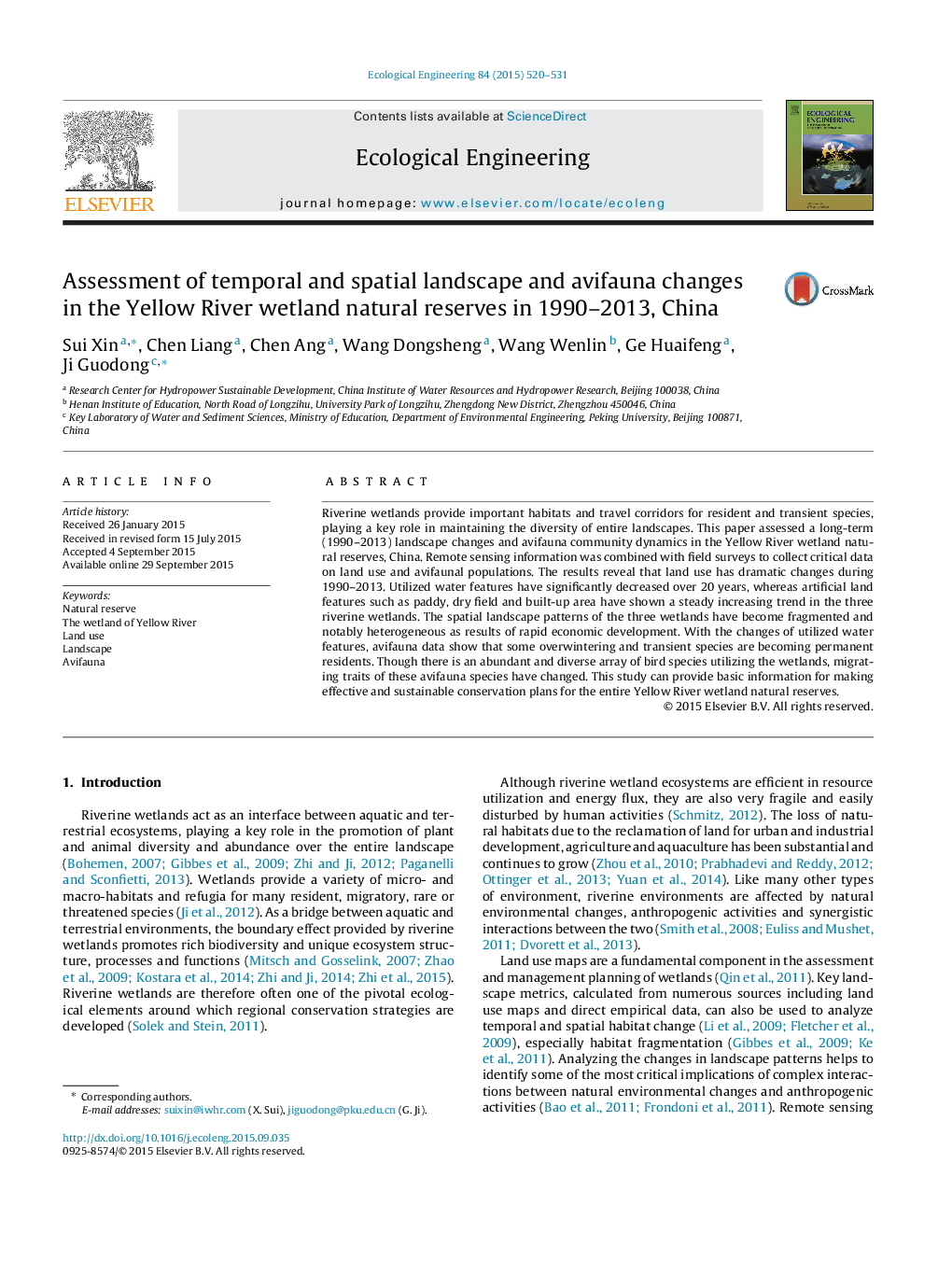| Article ID | Journal | Published Year | Pages | File Type |
|---|---|---|---|---|
| 4388822 | Ecological Engineering | 2015 | 12 Pages |
Riverine wetlands provide important habitats and travel corridors for resident and transient species, playing a key role in maintaining the diversity of entire landscapes. This paper assessed a long-term (1990–2013) landscape changes and avifauna community dynamics in the Yellow River wetland natural reserves, China. Remote sensing information was combined with field surveys to collect critical data on land use and avifaunal populations. The results reveal that land use has dramatic changes during 1990–2013. Utilized water features have significantly decreased over 20 years, whereas artificial land features such as paddy, dry field and built-up area have shown a steady increasing trend in the three riverine wetlands. The spatial landscape patterns of the three wetlands have become fragmented and notably heterogeneous as results of rapid economic development. With the changes of utilized water features, avifauna data show that some overwintering and transient species are becoming permanent residents. Though there is an abundant and diverse array of bird species utilizing the wetlands, migrating traits of these avifauna species have changed. This study can provide basic information for making effective and sustainable conservation plans for the entire Yellow River wetland natural reserves.
